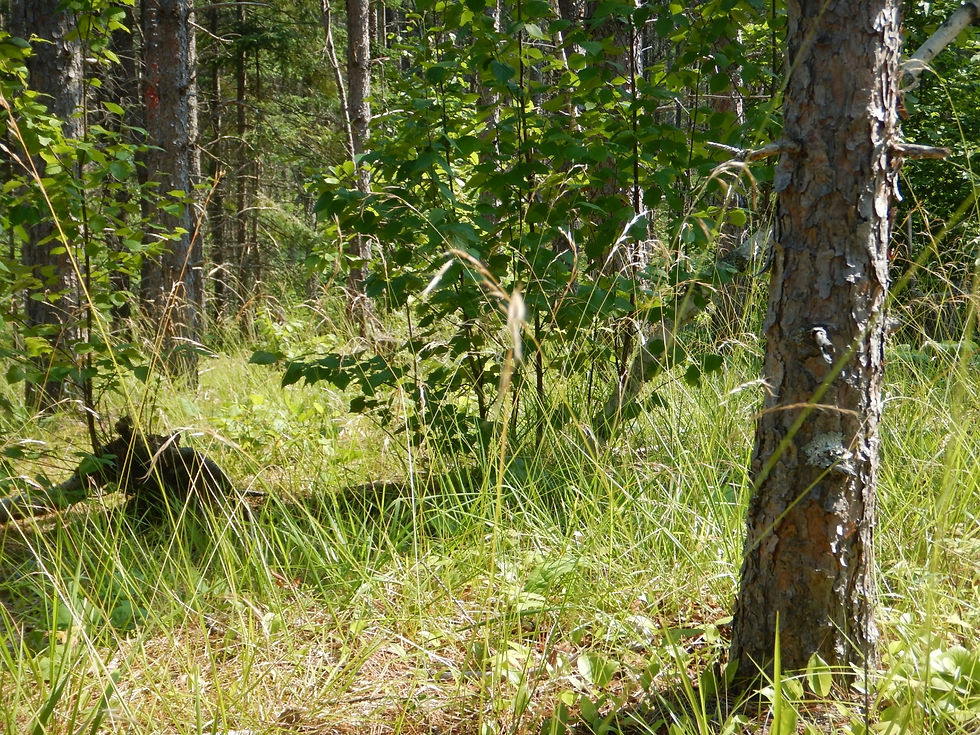The Squeak in the Seeds
- Rockosopher

- Jul 14, 2021
- 2 min read
Updated: Jul 27

If you want to sow grass, you need to grass seed. It is a laborious process which comes with a chorus of delicate squeaks. The fringe zone erupting along the perimeter of recently logged forests commonly sprout a species of undomesticated grass in light green clumps. Its blades crease the humid tangle of downed logs, tall and fragile. Individual blades of false malic grass (Schizachne purpurascens) reach for the broken light winking in from between fallen timbers. Their ideal environment. Sturdy in soils loaded with rocks and partial shade, false malic grass is highly sought for restoring disturbed woodlands such as those across the Minnesota and the Upper Midwest.
Spikelets of seeds - the portion we normally visualize as the grain of a domestic wheat plant- only advertise their readiness when their floret tips are bathed in sunlight at just the right time. As for sowing via the Big Three Seed Spreaders, wind, water, and wildlife, this makes false malic grass perfectly fertile for its now drooping, tender teeth to intertwine with fronds of forest fern, break loose against peeling bark, or droop so low as to sweep the nearby soil with its head and so shake free its seeds to produce another stolid clump in the next growing season.
Collecting grass seed might strike a grower as myopic, after all grass is ubiquitous in urban environments. Tread lightly, however, as the hunter of false malic grass will need to arm themselves with knowledge of deep forest courses scoured by industry and who are acutely yielding back to the precision of fringe forest vegetation. Although the species in a fringe zone resemble their forest kin, there is a dramatic schism that exists between sunlight, dripping through layers of canopy, and that of uninterrupted sunlight pouring into fringe zones. You must be conscientious to spot those lime threads bowing their heads with the burden of a season’s fertile offspring.
While other species equally seize the closing gap left by a logged clearing, where the competition for light, rain, and space has been significantly slackened with the absence of trees, the pockets of suitable conditions for false malic grass are equally protean. Once you adjust your eyes to the slackened wave of spikeletts through the humid air, you may collect the fruits of your hunt. Grip each blade with your thumb and index finger. Cup your palm to catch the shaking florets. Pull upward against the tip of the dropping head of grass. The dragging motion will give off a squeak. Your hand will continue to feel empty but overturn it to reveal the 4-12 grains of grass seed: spoils to heal for forest.

Prairie seed collecting is a gentle practice. In the epoch of wild food gathering, when any amount of carbohydrates were prized for their sustained energy. The squeak in the seed collecting must have added a high-pitched humor to each unique and beautiful woodland prairie song. To be on one's knees chasing pinches of elusive false malic grass, it is a task for the homely philosopher. The patient planter. The tenaciously hopeful.
There is no sure fire way to ensure large quantities can be collected, nor should there be. It remains a labor of earthy commensalism.
~Rockosopher



Comments